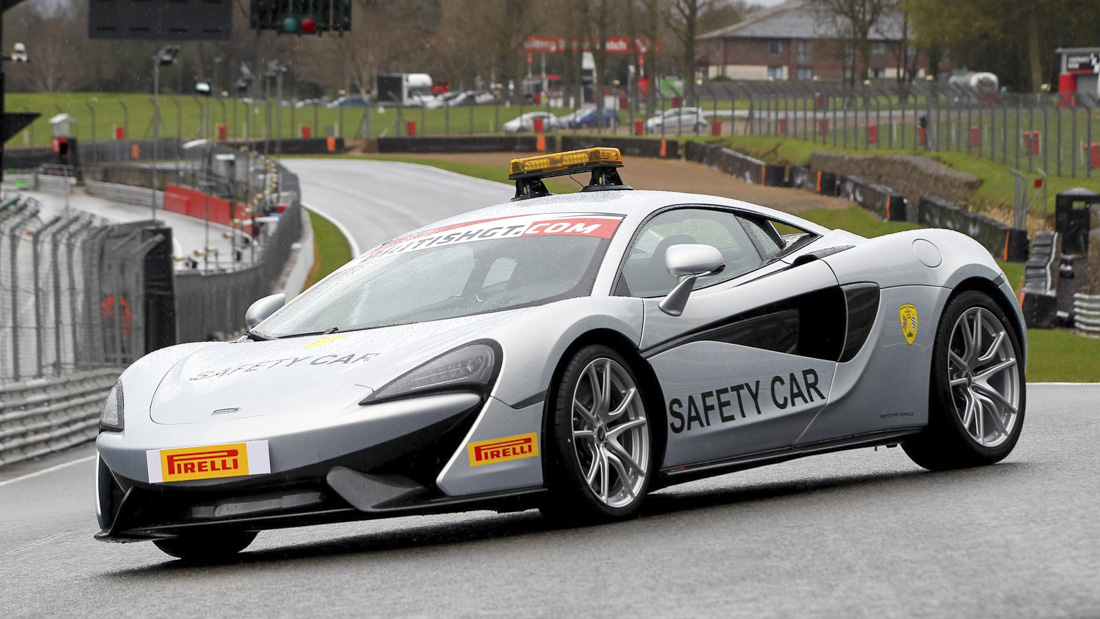
McLaren has been confirmed as the safety car partner for the British GT Championship. The natural progression of this, then, is a shiny new McLaren safety car.
And it’s a 570S, the company’s latest sports car - the 570S that’s better than a 911 Turbo and Audi R8, no less - that’s been given the stickers’n’lights treatment.
It’s a reminder that health and safety can be fun, that the world of pace cars is one that’s nearly as interesting and diverse as that of the competitor cars it looks after.
So join us, on a whistle-stop tour of the current crop of safety cars…
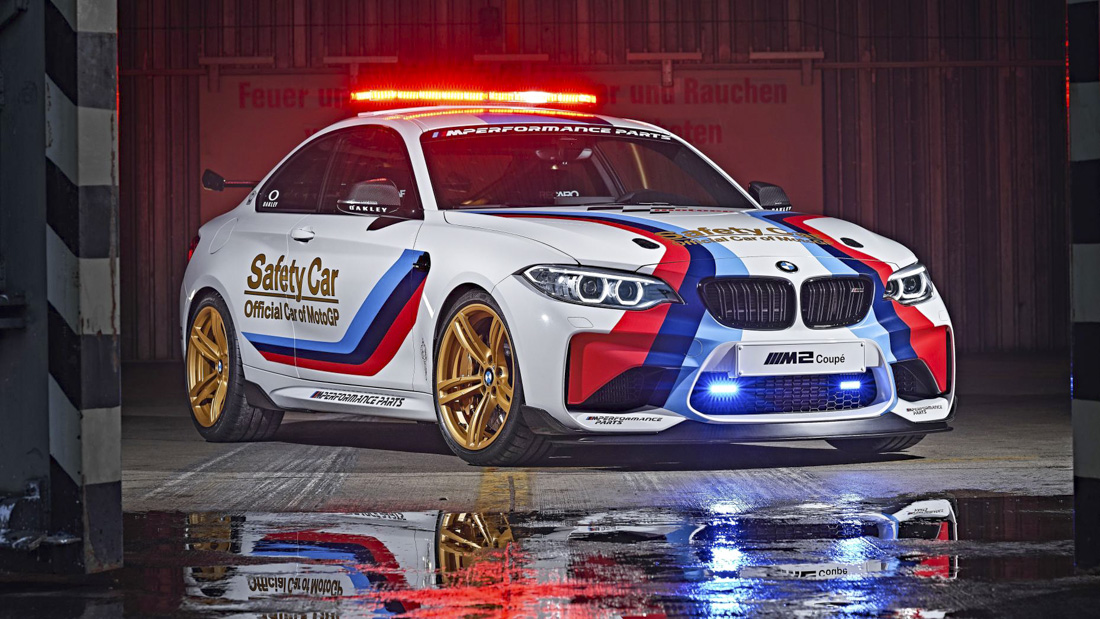
Moto GP - BMW M2
Oh yes. We’ve featured a full gallery of this one before. Moto GP has a pretty longstanding relationship with BMW, and the latest safety car fruit to be borne from this is a rather pumped-up little M2.
Changes over the standard (and already brilliant) BMW M2 naturally prioritise safety, with a roll cage, harnesses and fire extinguisher on the inside, and a whopping great light bar on the roof.
Worried the lightbar makes too much of an impact on the M2’s slippery profile, BMW has also stuck a ginormous rear wing on the back of the Moto GP pace car, and it’s made out of nice, light carbon fibre reinforced plastic.
The M2’s turbocharged 365bhp six-cylinder engine remains, making the car good for a 155mph top speed and 4.3-second 0-62mph time. And if you’re worried that’s a bit too exciting for a car focused on driver wellbeing, those incredible gold wheels shroud carbon ceramic brakes, borrowed from big brother BMW M4.
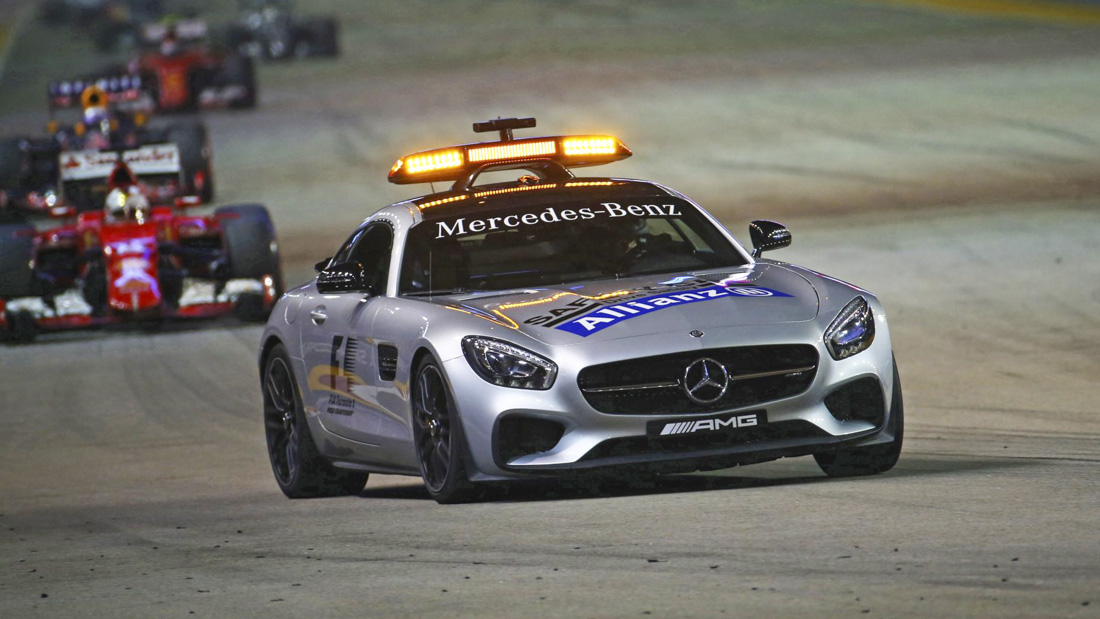
Formula 1 - Mercedes-AMG GT S
Another long standing pace car tie-up concerns Mercedes and F1, with a partnership approaching two decades. The AMG GT S is now in its second year as Formula 1 safety car, but a repeat performance is no problem when you have a 510bhp, raucously loud and seemingly always-on-the-edge-of-its-grip-limit sports car.
Modifications over standard are brief but important: many flashy lights, a camera to show on-board stuff, and a louder sports exhaust. Handy in an era of less sonorous, six-cylinder F1 cars.
While Merc has the F1 pace car deal all sewn up nowadays, it’s not always been the way. Motorsport’s premier series has a history of wonderfully odd and charismatic road cars at the front of its grid. How does a Ferrari 348, Lamborghini Countach and Renault Clio Williams sound?
And if you like obscure, then nothing beats the Tatra 623 that infamously hit Taki Inoue…
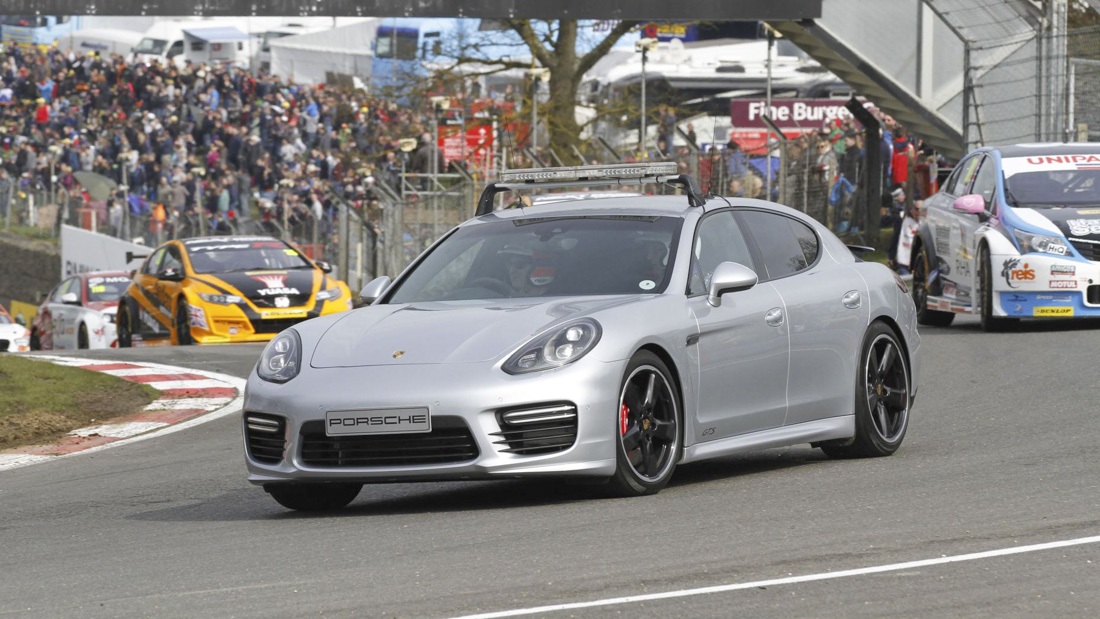
BTCC - Porsche Panamera GTS
The British Touring Car Championship: a gaggle of predominantly front-driven hatchbacks, all with circa 300bhp. The safety car that leads them all? A 434bhp Porsche with four-wheel drive. If ever there was a safety car with the potential to knuckle down and actually win the race it happens to be marshalling…
Porsche’s tie-up with the BTCC works quite nicely with the Carrera Cup being one of the saloon series’ support races, and Cayennes have previously put in a stint as safety car. But the Panamera is closer in size and shape to the cars it leads, making us wish for the day its driver loses patience and decides to start tussling with Focuses and Civics.
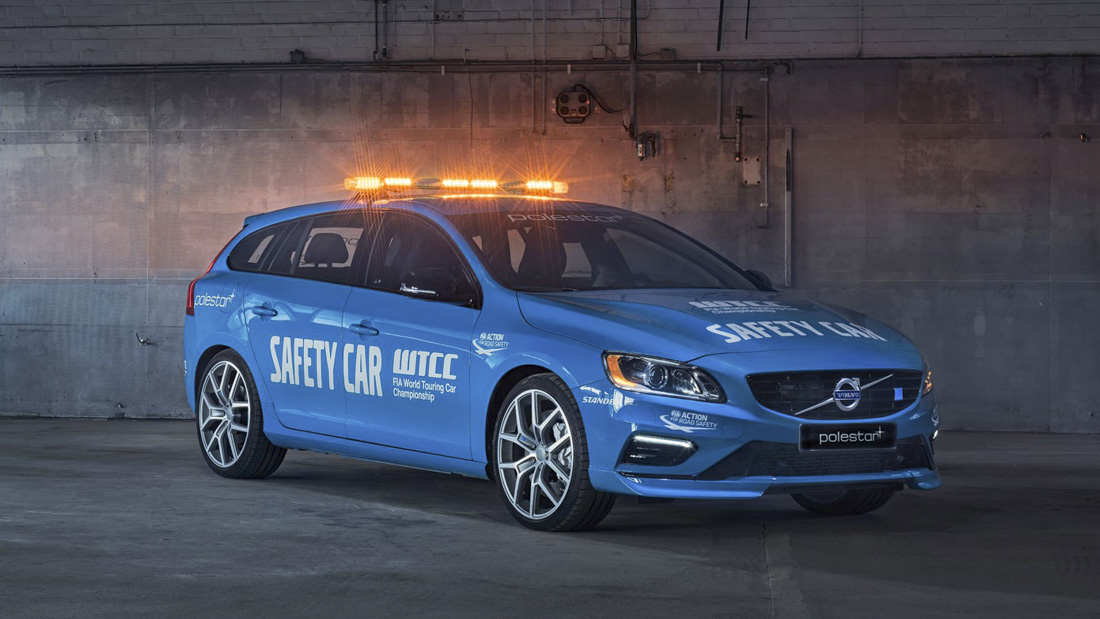
WTCC - Volvo V60 Polestar
The grander, World Touring Car Championship actually has a less powerful car, namely a 345bhp Volvo V60 Polestar. Because what could possibly be safer than a Volvo safety car?
On top of the standard V60’s dozens of airbags and warning bongs, the WTCC pace car adds a roll cage (imagine the carnage if a safety car actually rolled?), rescue kit and communications tech. And perhaps most importantly, eye-sizzlingly bright orange warning lights.
Volvo estates have history in the touring car arena, of course, with 1990s BTCC races featuring the iconic 850 Estate racer and its decidedly unsafe two-wheeling exploits. Given a few Volvo S60s run in the WTCC, perhaps this safety car will give the Swedes the taste for its tourers tearing around circuits instead…
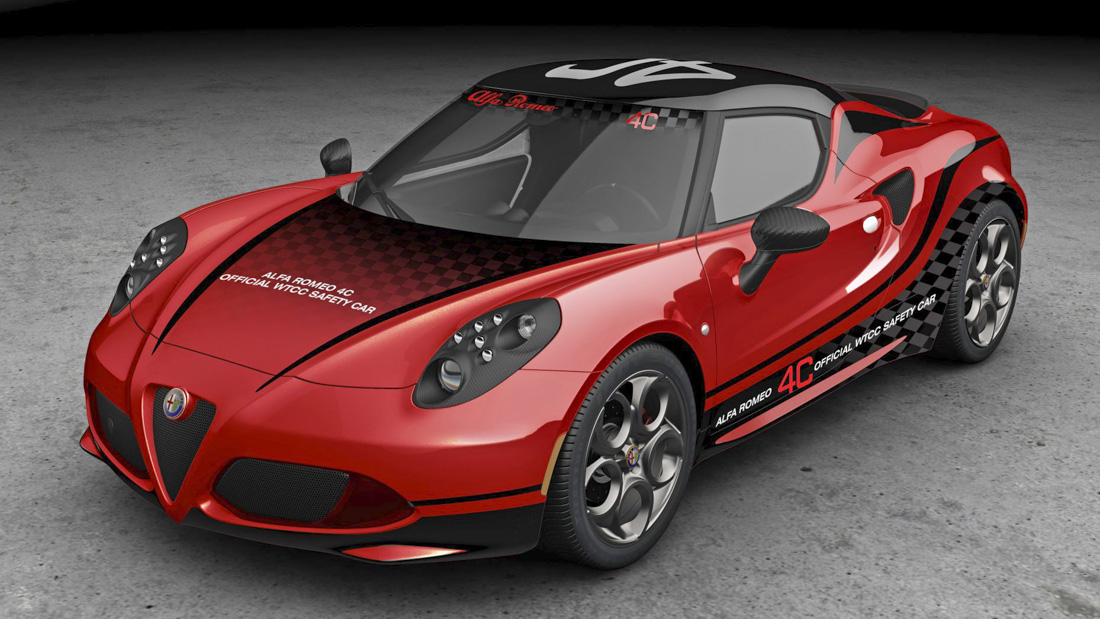
WTCC - Alfa Romeo 4C
Alright, so we’ve deviated from plan and covered a car from the past. But we just wanted to draw your attention to the WTCC’s wonderful change of tack. While this year’s pace car is an undeniably safe Volvo, it comes after the infamously wayward (on roads, at least) Alfa Romeo 4C. Perhaps the pale faces of its drivers catalysed the change?
The Volvo is notably more powerful than the 237bhp 4C, and with its large, estate boot, nigh on infinitely more practical when it comes to carrying safety-related gubbins. Doesn’t look as pretty as the spindly little Alfa, though.
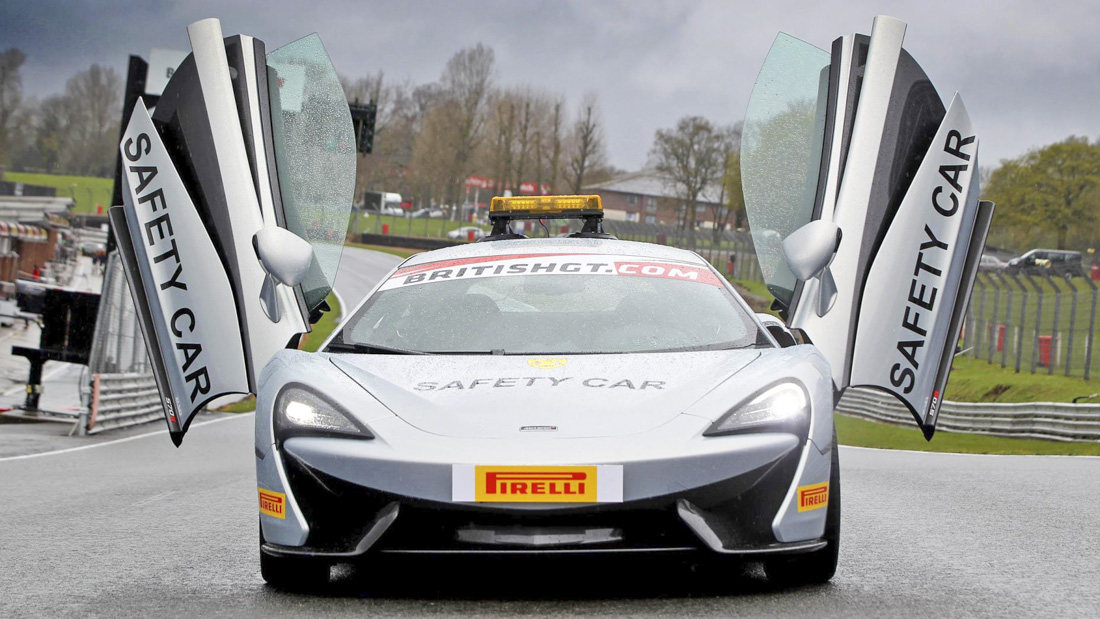
British GT Championship - McLaren 570S
The car that inspired our gallery is probably the most track capable of the lot. The 570S as Brit GT pace car is a nice coup for McLaren, as the Woking supercar maker also has cars on the grid in the shape of the 650S GT3 and 570S GT4, the latter completing its development season exclusively on home turf.
The 570S purports itself as a safe car from the off, chiefly because of the strong carbon tub that comprises its core structure. Ensuring it doesn’t create an undue obstacle for the racers behind it, the 562bhp, twin-turbo V8 engine from the 570S road car remains.
Our only qualm is this: why that colour? When McLaren has such vivid oranges on its paint chart, those flashing lights seem burdened with extra work when the 570S is painted such a subdued silver…
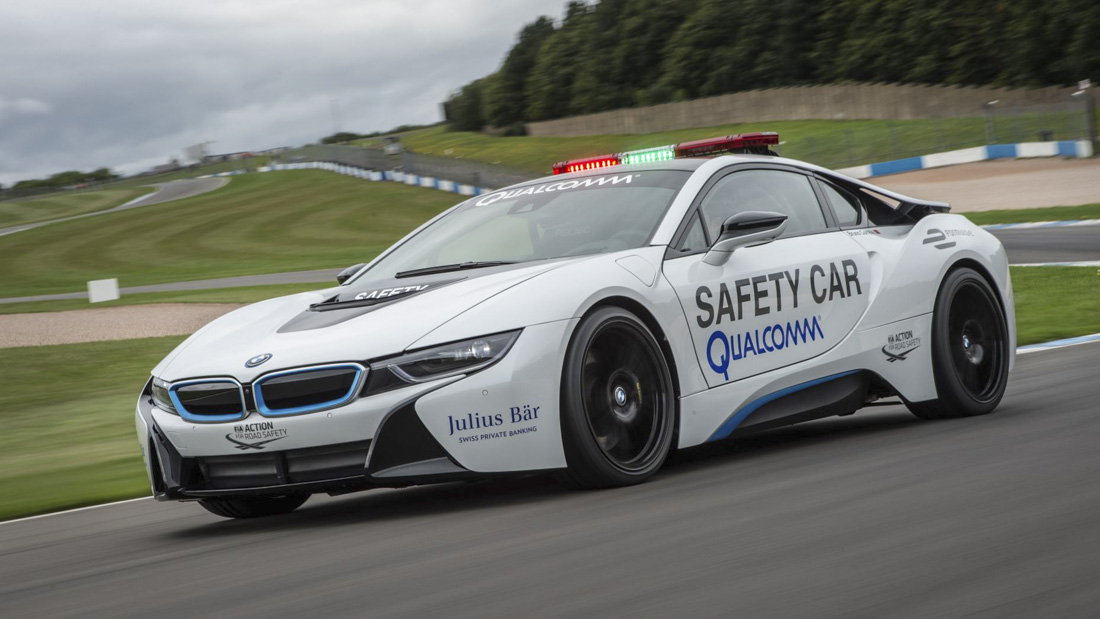
Formula E - BMW i8
Formula E, you’re no doubt aware, is the silent, more environmentally friendly cousin of Formula 1. And yet its pace car undoes a bit of that hard work by having a petrol engine thrumming away inside of it.
Only just, though. The BMW i8 is a hybrid, with the fuel-supping part of its drivetrain a nice, titchy 1.5-litre three-cylinder engine. Total power is 362bhp, which is nearly 100bhp more than a Formula E car in its most potent qualifying mode, while the i8’s limited 155mph top speed outstrips the cars it leads by 15mph.
That’s hardly the point, though. Formula E is battled out by young, exciting talent on tight little circuits where outright speed isn’t key. But like in the BTCC, we sense the safety car could- should its driver feel mischievous - have the lot of ‘em.
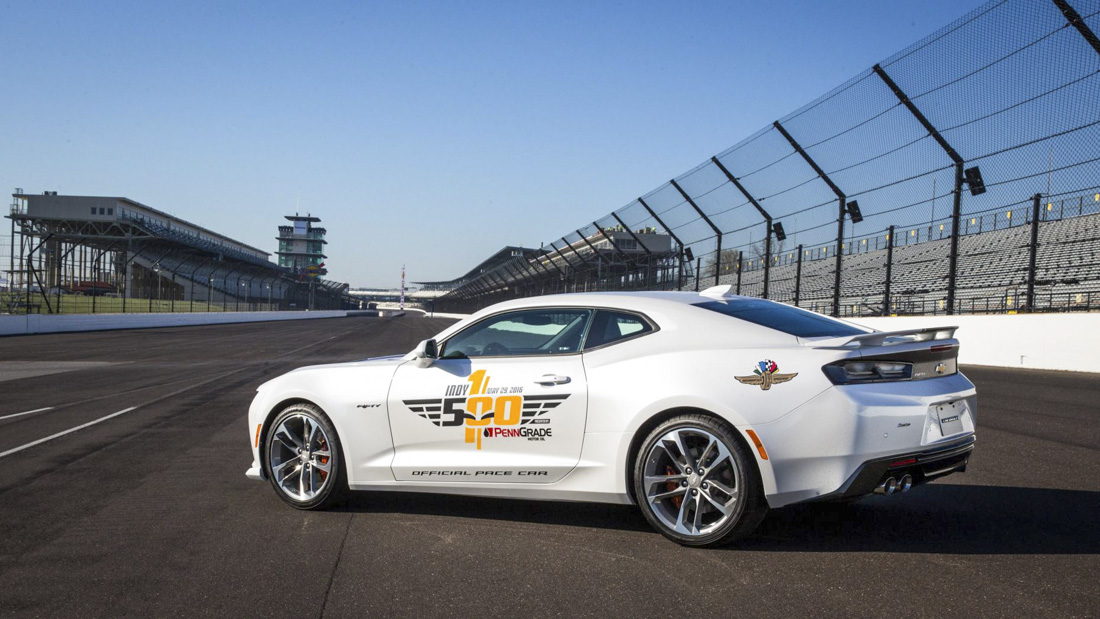
Indy 500 - Chevrolet Camaro
Pub trivia fans! The Indianapolis 500 introduced the pace car to the world back in 1911, a device designed to lead the grid through some untimed laps to get the cars warmed and ready to go in a nice safe manner.
Nowadays, it differs from most major race series by using a different car and driver each year. The drivers are usually a famous face - past names include Jackie Stewart, Morgan Freeman and, um, Lance Armstrong - while the car is typically the latest, most exciting muscle car on the market.
For the past 14 years it’s been a Chevrolet, and this year is no different: for the 100th running of the Indy 500, it’s a 50th anniversary edition Camaro SS, complete with 455bhp V8. Four pace cars will support the race, but the car leading the grid will be driven by Roger Penske, whose Team Penske is also 50 this year.
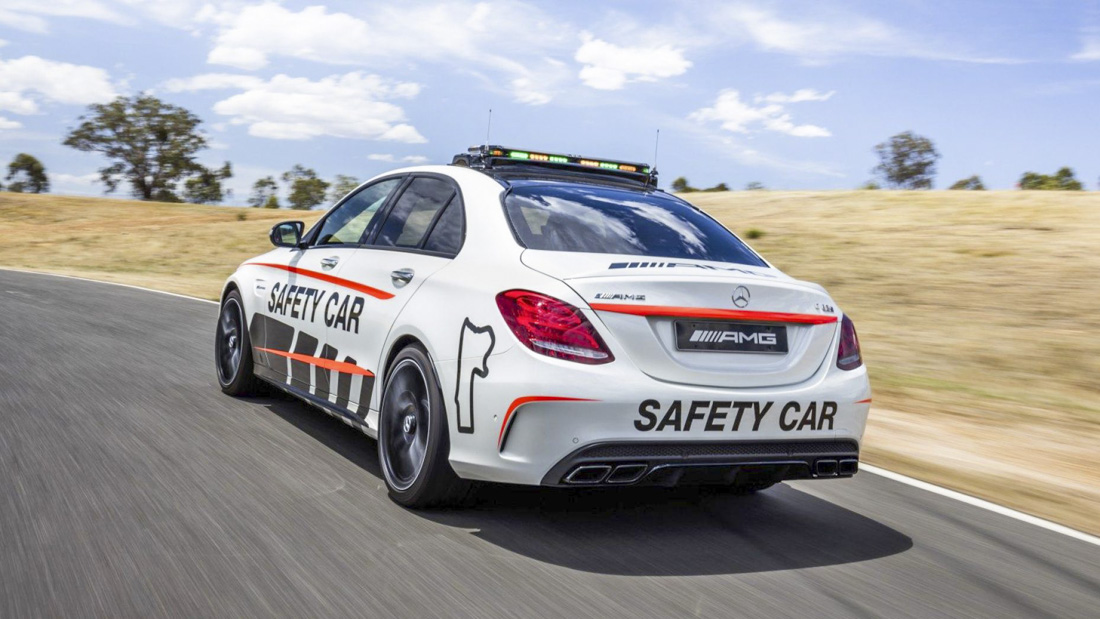
Bathurst 12 Hours - Mercedes-AMG C63 S
Australia’s Mount Panorama circuit hosts two endurance races. At the beginning of each year is the Bathurst 12 Hours, is a race for GT-spec sports cars.
Its safety car is the latest Merc C63 AMG, naturally in its most potent, 510bhp S form. That means it uses, by-and-large, the same rip-snorting engine you’ll find in the F1 pace car. Just housed in a more Antipodean-pleasing saloon car body…
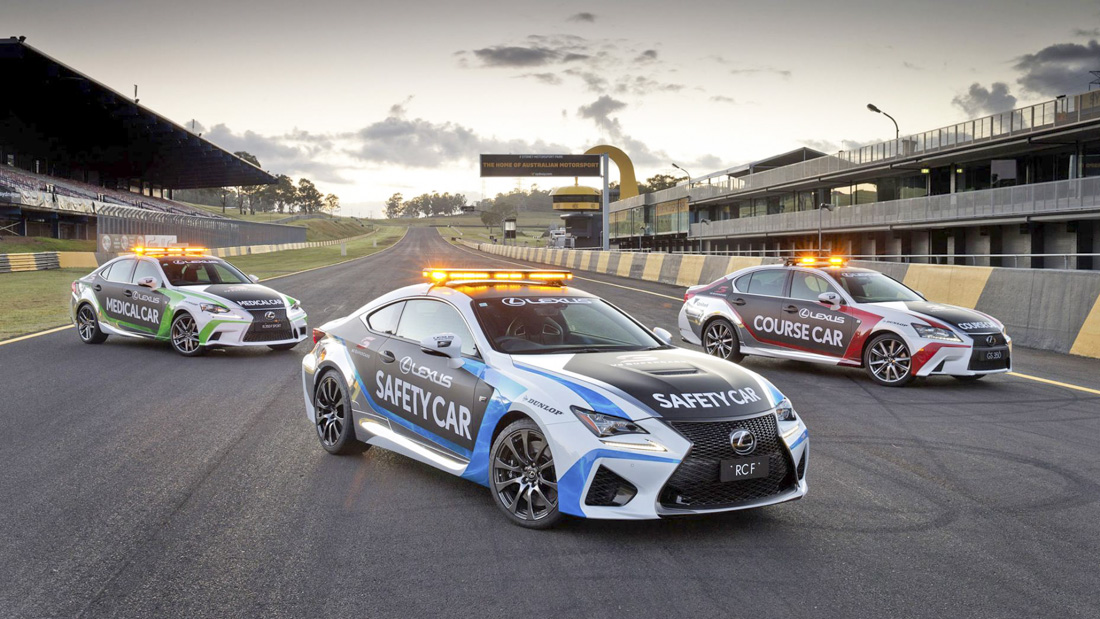
Bathurst 1000 - Lexus RC F
We cast such aspersions purely because the Bathurst race that really matters is its headline V8 supercars event, which sees eight-cylinder saloon cars battle it out in front of one of the world’s most appreciative motorsport crowds. V8 four-doors are synonymous with Aussie motorsport.
Ford versus Holden is the traditional, often tribal rivalry upon which the race revolves. So it’s perhaps sensible that the pace car keeping order is from neutral ground, and so it is with the Lexus RC F. It’s V8 powered, ensuring it’s in keeping with the grid’s core stipulation, while a similarly muscular GS F saloon acts as medical support.
Hurrah for V8s!
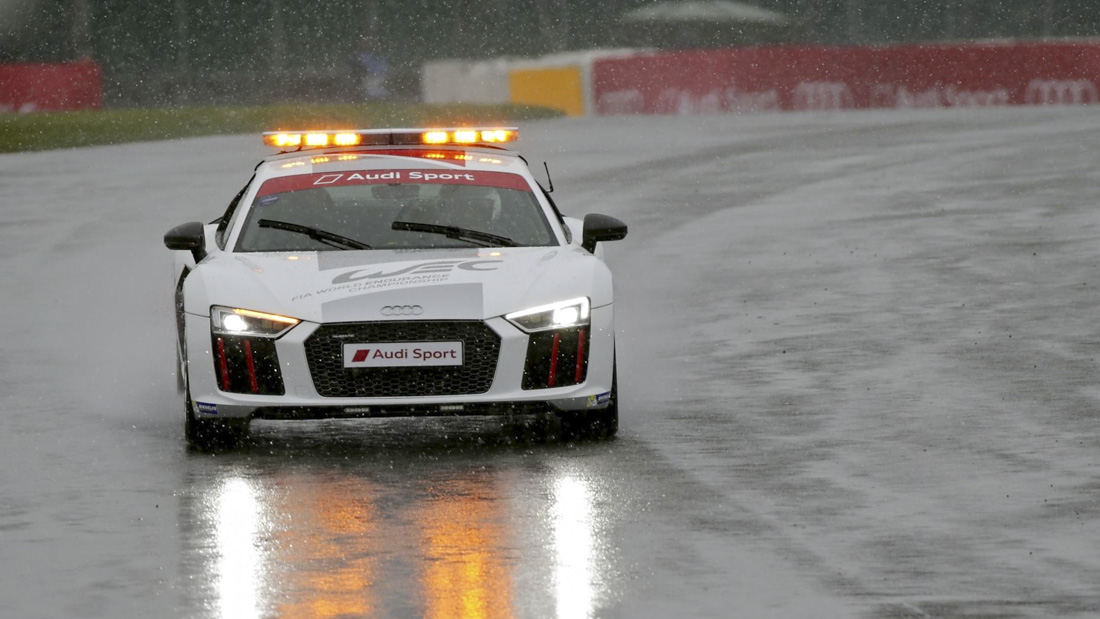
World Endurance Championship - Audi R8
We end on the Audi R8 which led out the World Endurance pack in 2016’s opening race. Given the snowy conditions that curtailed early practice, we imagine its driver was very thankful for the Quattro four-wheel-drive that lies beneath.
In recent years, the sight of Audi pace and medical cars in front of a Le Mans grid always topped 24 hours later by another Audi was a bit odd. But as Porsche’s endurance racing success has risen, there’s less all-consuming Audi-ness about the whole thing.
Still, we suspect even the most hardened cynics enjoy one of the few naturally aspirated supercars still in production, leading what is arguably the world’s most exciting racing grid right now. A bunch of 1000bhp hybrid prototypes and screaming GT cars is already mouth-watering enough, but a 610bhp V10 R8 being driven close to its limits in front of them is the cherry on top it all. Safety cars rock.
